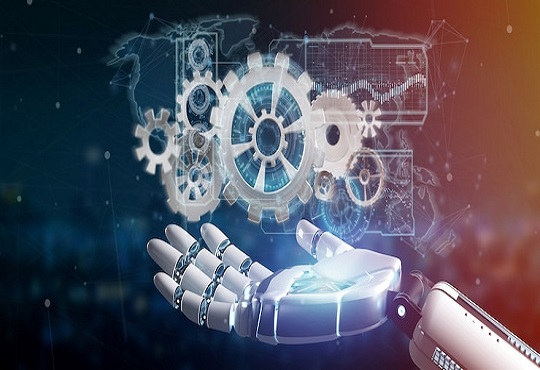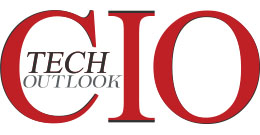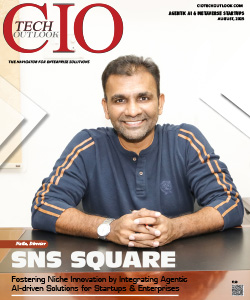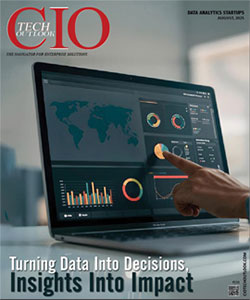Top 10 RPA Tools
Grena, Correspondent, CIOTechOutlook | Saturday, 23 August 2025, 08:09 IST
 Robotic Process Automation (RPA) is revolutionizing the way organizations operate business by automating repetitive, rule-based tasks, improving efficiency, accuracy and scalability. Today, organizations from several industries including banking, healthcare, retail, and government are incorporating RPA to improve workflows, reduce costs and boost productivity. From enterprise-grade solutions to open source platforms, the RPA landscape contains a great variety of tools to suit different automation needs. Leading platforms combine AI, machine learning, and low-code environments to enable both technical and non-technical users to design, deploy, and manage intelligent automation. This article explores the top RPA tools shaping the future of digital transformation.
Robotic Process Automation (RPA) is revolutionizing the way organizations operate business by automating repetitive, rule-based tasks, improving efficiency, accuracy and scalability. Today, organizations from several industries including banking, healthcare, retail, and government are incorporating RPA to improve workflows, reduce costs and boost productivity. From enterprise-grade solutions to open source platforms, the RPA landscape contains a great variety of tools to suit different automation needs. Leading platforms combine AI, machine learning, and low-code environments to enable both technical and non-technical users to design, deploy, and manage intelligent automation. This article explores the top RPA tools shaping the future of digital transformation.
UiPath
UiPath continues to dominate the RPA industry and is often considered the benchmark tool for enterprise automation. Its drag-and-drop interface makes it easy for both technical developers and business users to design workflows. UiPath has AI capabilities incorporated into their platform and other advanced features such as document understanding and proctor mining. Industries such as banking, healthcare, and retail rely on UiPath for large-scale, secure, and intelligent automation.
Automation Anywhere
Automation Anywhere is a cloud-native RPA platform and is known for its flexibility, scalability, and AI-enabled bots. It has Bot Insight, which provides real-time analytics and IQ Bot for intelligent document processing. Automation Anywhere also has a Bot Store, which gives organizations access to pre-built bots to speed up deployment. It has been widely adopted because it can handle end-to-end workflows. Enterprises used it for finance, compliance, and HR operations, where accuracy and speed are critical. Its cloud capabilities and AI-enabled insights keep it viable in an ever-changing RPA ecosystem.
Mihir Shukla, CEO of Automation Anywhere, said, “Leaders are clearly prioritizing AI-augmented workflows, recognizing the undeniable value of Agentic AI. The fact that a significant majority are specifically seeking these solutions from modern, cloud-native RPA and AI automation vendors underscores that deep process automation expertise is critical to scale adoption and unlock meaningful impact, accelerating the journey to the autonomous enterprise and paving the path to artificial general intelligence for work.”
Blue Prism
Blue Prism is one of the earlier RPA and is still a popular enterprise solution for organizations requiring security, compliance, and governance. Blue Prism is designed for large scale automation and requires more control than most of the low-code RPA tools on the market. It allows deployment on-premises, in the cloud, or in hybrid models, offering flexibility.
“We’re delighted SS&C Blue Prism has been named a Leader in the Gartner Magic Quadrant for Robotic Process Automation for the seventh year running,” said Bill Stone, CEO and Chairman of SS&C Technologies. “SS&C Blue Prism combines market-leading RPA and orchestration technologies with the latest artificial intelligence so organizations can tackle more complex tasks and dynamic business processes. We’ve scaled to more than 2,700 digital workers and AI agents across our own operations, resulting in over $200 million in annual savings. With SS&C leading the charge on deployment, customers can be confident in rolling out SS&C’s automation solutions securely, effectively, and responsibly.”
Blue Prism provides AI services in its Digital Exchange (DX) marketplace that provides companies with prebuilt connectors to machine learning and natural language processing capabilities.
Microsoft Power Automate
Microsoft Power Automate, which is part of the Microsoft Power Platform ecosystem, is one of the fastest-growing RPA tools due its integration with Microsoft 365, Dynamics 365, and Azure. It provides a low-code/no-code environment, making it accessible to non-technical business users. From automating approvals in Teams to connecting with SharePoint or SAP, Power Automate brings automation directly into daily business operations, making it a practical and cost-effective RPA solution.
Kofax RPA
Kofax RPA is well known for its expertise in various aspects of document processing and data capture. Its RPA platform includes advanced OCR (Optical Character Recognition) technology making it a good fit for vertical markets that process unstructured documents in bulk, including healthcare, logistics, and government. Kofax has centralized management, analytics, and compliance monitoring which ensures that automation runs securely and efficiently. Organizations that are struggling with paperwork-rich workflows can generally rely on Kofax to improve the accuracy, speed, and compliance of their document-driven process automation.
WorkFusion
WorkFusion is an intelligent automation, blending RPA with pre-trained AI and machine learning models. WorkFusion is uniquely positioned to automate the work around documents, such as invoice processing, customer on-boarding, and compliance monitoring. WorkFusion's Intelligent Automation Cloud is commonplace in the financial services industry, where compliance regulations and detection of fraud detection are critical. For those organizations that want to migrate from basic task-based automation to cognitive automation, such as banks, insurance companies and highly regulated industries with compliance considerations, WorkFusion is an ideal choice.
Pega Systems
Pega represents an innovative approach to automation through the combination of RPA along with BPM and case management. Unlike other tools, which tend to focus on robotic automation as the core function of the tool, Pega focuses on workflow orchestration and automation from end-to-end.
“Our unique approach to AI was a key driver of our strong first half results,” said Alan Trefler, Pega founder and CEO. “Pega harnesses AI's creative potential where it can best drive transformation—during workflow design with Pega Blueprint. This drives consistent execution through our state-of-the-art Pega Infinity workflow engine, rather than through inherently unpredictable prompts. Pega’s Predictable AI approach gives enterprises both the innovation they crave and the operational consistency they require.”
Telecommunications, healthcare, financial services and many other industries have adopted Pega to orchestrate transactional customer engagement practices along with managing back office administrative activities.
Appian
Appian is a low-code automation platform that combines RPA with AI, BPM, and case management. Appian is well known for the speed of development, allowing organizations to quickly design, deploy, and scale automation workflows. Appian optimizes processes, offers end-to-end visibility of workflows, and enables continuous improvement. Appian RPA is a robust automated automation tool that can be deployed on-premises or in the cloud.
“This release makes it easier for all organizations, including our government customers, to securely leverage enterprise-grade AI,” said Michael Beckley, CTO, Appian. “We’re delivering AI with guardrails and transparency, without compromising on security or control.”
It is widely used in industries such as government, manufacturing, and finance, where process transparency and compliance are important.
Matt Calkins, Appian Founder and CEO, said, "The best AI will be the AI you put your data into, not whoever bought the biggest stack."
NICE
NICE is an automation platform that focuses on customer service, workforce optimization, and real-time analytics. NICE combines Robotic Process Automation (RPA) and attended automation, where bot assists an employee in real time during interaction with customers. Organizations and enterprises adapt NICE to make positive contributions to a customer experience, especially those in telecommunications, financial services, healthcare, and more. By combining RPA with workforce intelligence, NICE ensures that automation delivers measurable improvements in both efficiency and customer satisfaction.
Open-Source Alternatives (Robot Framework, TagUI, OpenRPA)
Open-source RPA programs can offer low-cost and customizable options, making them great alternatives for organizations. Robot Framework is a popular open-source tool with powerful automation, and testing capabilities. TagUI, supported by AI Singapore, allows command-line RPA and is suitable for developers seeking flexibility. They give a greater element of control and customization, making them useful when technical teams want to experiment with, or build tailor-made automation systems.
Conclusion
RPA tools are revolutionizing industries by executing repetitive tasks, enhancing accuracy, and driving productivity. With AI integration, low-code environments, and intelligent workflows, UiPath, Automation Anywhere, and Blue Prism facilitate scalable, secure, and sustainable operations, enabling organizations to reduce costs, optimize processes, and expedite digital transformation across industries.




